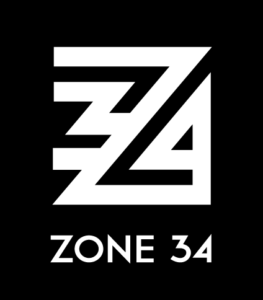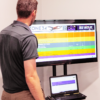Calf muscle strains can occur in basketball with movements such as sudden acceleration, jumping, and high speed running. The two biggest risk factors are being an older athlete or having previously sustained a calf injury.
“SOMEBODY KICKED ME!”
Most acute calf strains involve sudden pain in the posterior lower leg, and a popping or pulling sensation may also be felt. Often athletes will look behind them to see who kicked the back of their leg!
“HOW LONG AM I OUT FOR?”…
The time to return to activity is influenced by the nature, location and grade (Grade 0-3) of the injury. Low grade injuries can return to activity within 2 weeks, whilst high grade injuries will take over 3 months. Injuries that involve the tendon typically take longer to recover than intramucular injuries. MRI and ultrasound imaging can be used to determine the grade and location of the injury, whilst the mainstay of clinical decision making will be based on symptoms and objective testing.
Time alone should not be used to determine when return to play. It is important to complete a well structured rehab protocol and demonstrate a full recovery through a series of objective tests. Don’t roll the dice and hope for the best!
CALF REHABILITATION
Phase 1: Acute Management
- Restore normal gait. For grade 3 injuries crutches may be needed initially and shoes with a heel (raise) can assist with walking in the early stages.
- Avoid passive stretching initially.
- Swelling control, with compression options ranging from compression bandages, compression socks, through to Recovery Boots and Game Ready units.
- Promote early pain free loading.
Phase 2: Regeneration, Strength and Introduction to Running
- Calf strength exercises to encourage muscle regeneration. Including both straight knee (gastrocnemius bias) and bent knee (soleus) calf raises is vital.
- As the calf muscle is responsible for loads up to 6 x body weight during running, strength exercises will require external loads include wearing a weight vest, holding kettle bells, or using the reformer and leg press.
- Plyometrics such as skipping rope, jumping, and hopping drills. These should be introduced after regaining both calf strength and rate of force development.
- Off Feet Conditioning. Watt Bike can be used to monitor power output (watts) and ensure symmetry of left vs. right legs.

Phase 3: High Speed Running and Direction Change
- Demonstrate full pain free range (e.g. gastrocnemius stretch, or Knee to Wall Dorsiflexion lunge)
- Demonstrate Triple Extension power production (e.g. pushing off using Glut Max, Quad and Calf in a coordinated manner)
- Regain good endurance on single leg calf raise to fatigue
- Progress through Basketball specific Rehab Runs which progress acceleration, high speed, and volume
- Allow recovery between strength and running sessions
- Maintain training loads with off feet conditioning. Consider kneeling wrestling drills as part of interval session to allow exposure to contact
Phase 4: Return to Training
- Incorporate Reactionary movements. E.g. BlazePod lights, or Auditory Prompts
- Complete sport specific movement patterns and training (e.g 1 : 1 drills, full court sprint, repeat rebound efforts, explosive jump /landings)
- Consider gradually increasing minutes and intensity at training initially
- Athletes should complete at least 2 full training sessions prior to returning to play. However this will vary depending on level of play, compliance with the rehab program, and individual risk factors.
REHABILITATION RUNS
A thorough rehab run program should include:
- Progressive increases in speed and volume (distance, reps)
- Change in direction
- Acceleration and Deceleration
- Reactionary direction change

PREVENT ANOTHER STRAIN!
To reduce the likelihood of injury it is essential to restore maximal strength, rate of force development and power production of the left and right legs during the later stages of rehabilitation.
Objective measures may include:
- Weighted Calf Raise (e.g. 5 RM, or Reps to Fatigue)
- Isometric Max Strength of Gastroc and Soleus bias tests (Force Plate or Dynamometer). In elite athletes a goal is to achieve peak forces of 1.5 x Body Weight
- Max Vertical Height (on force plate) with less than 10% difference between sides
- Force plates (assessing power production and landing stiffness)
Post return to play continue with calf based strength exercises twice a week for a number of months. Be sure to fit this into your normal gym or home strength routine.








